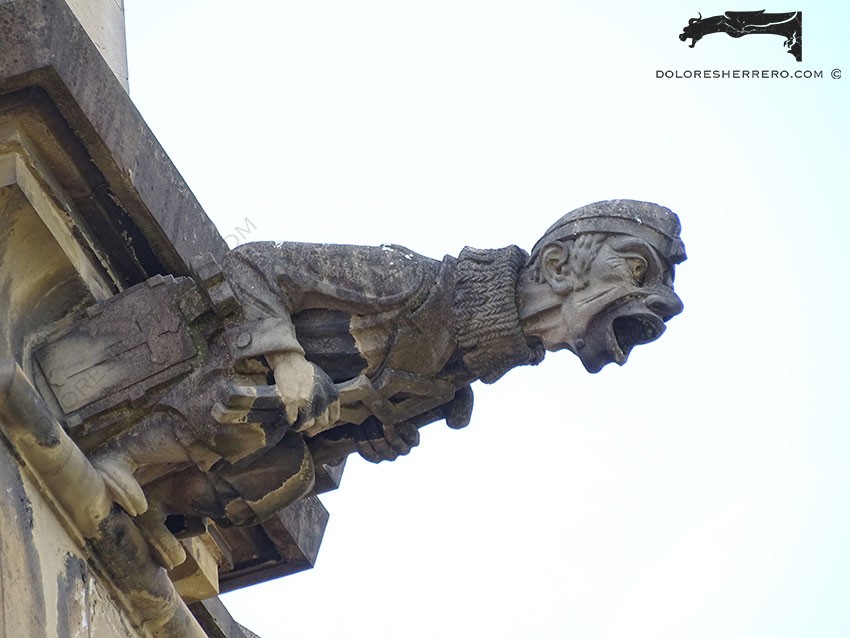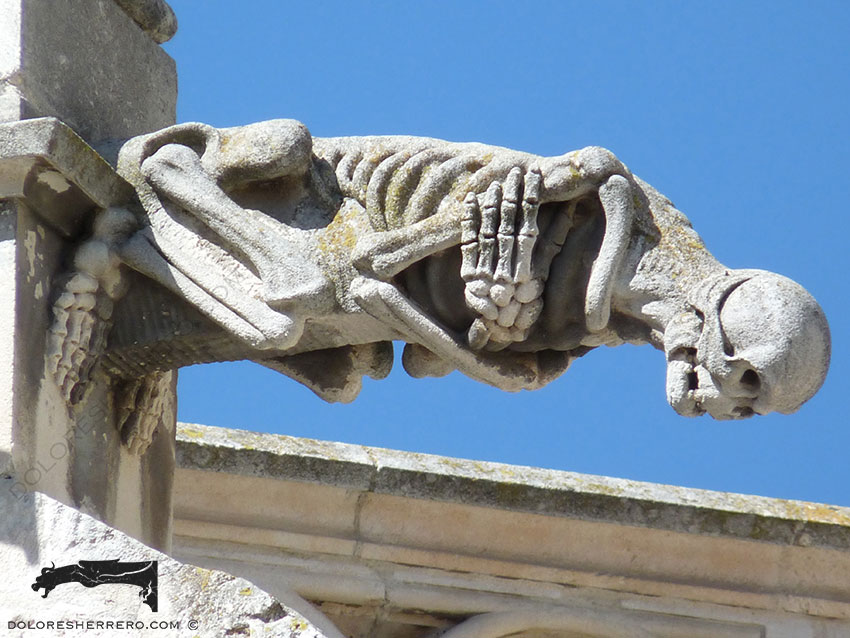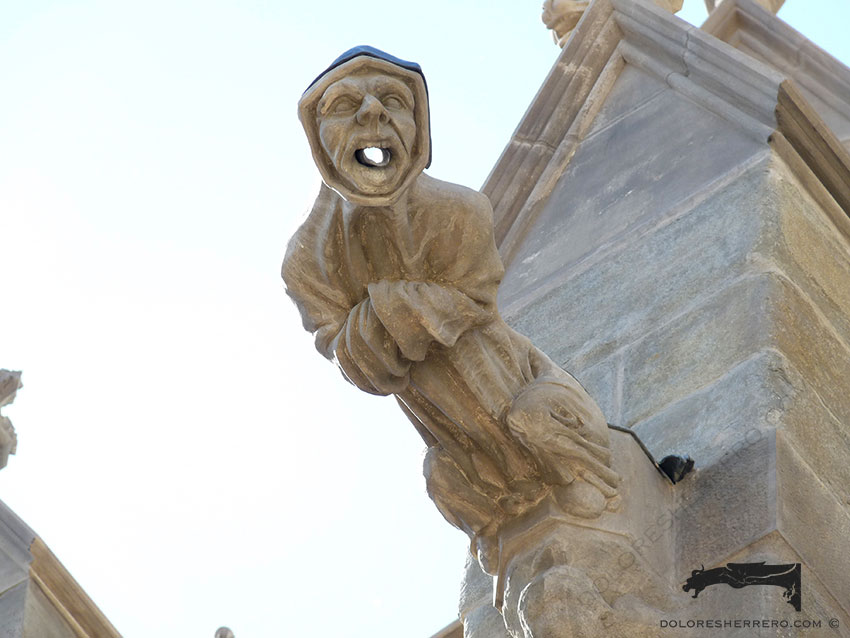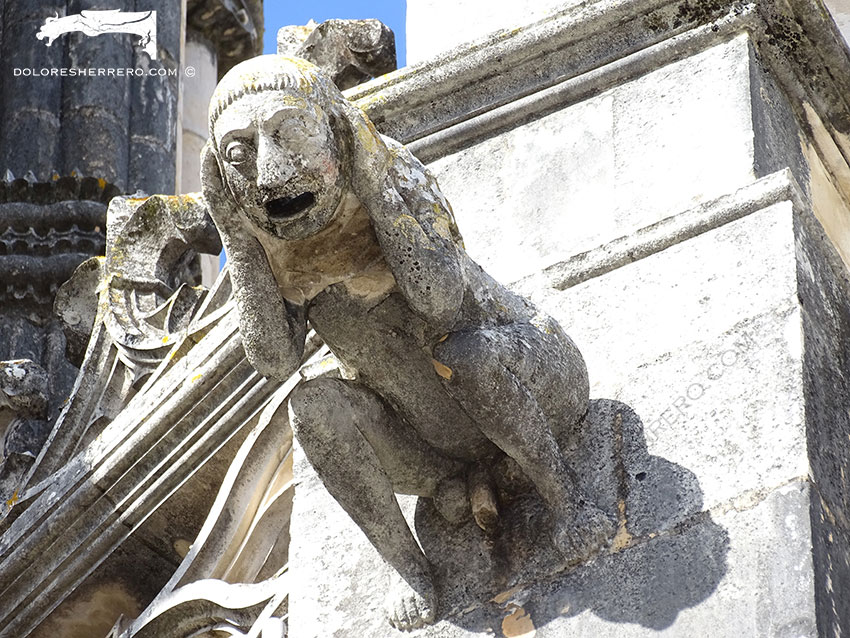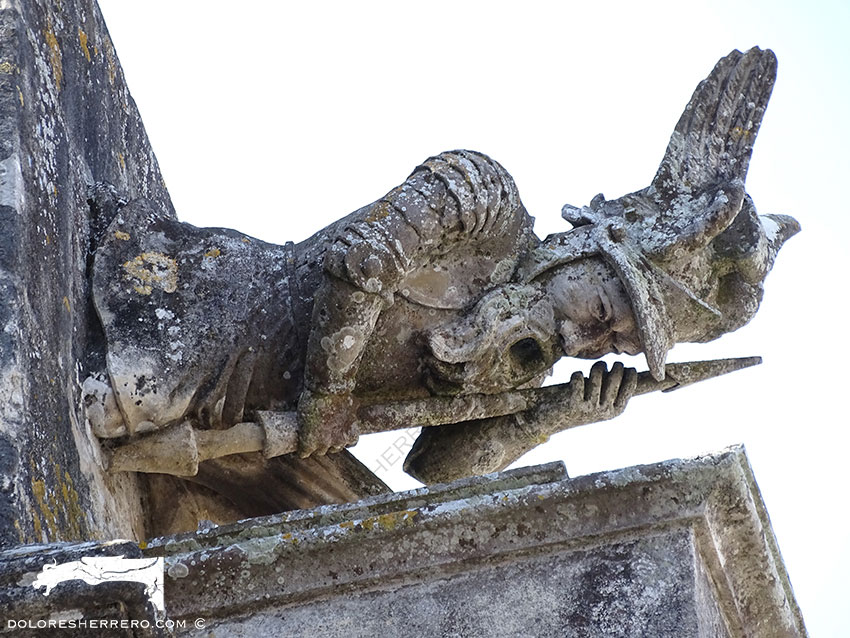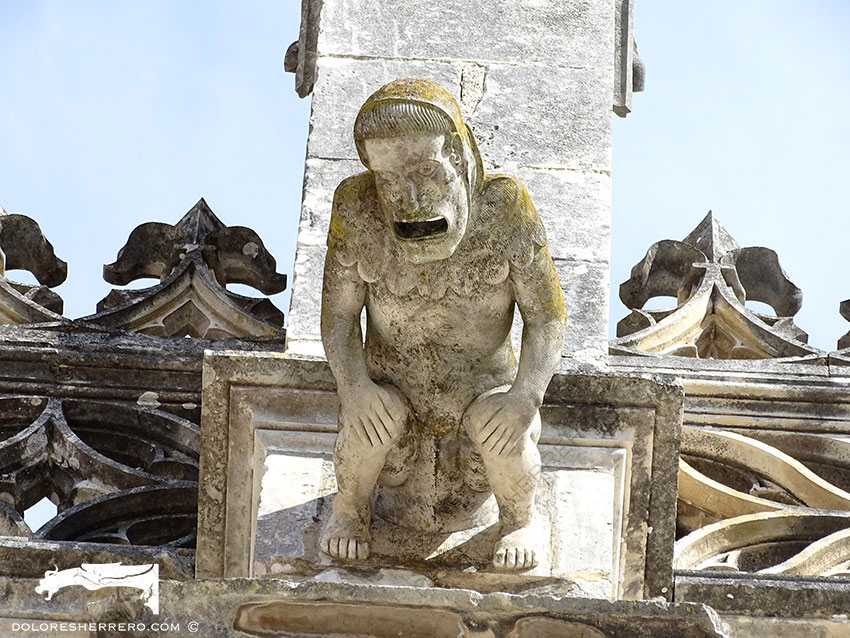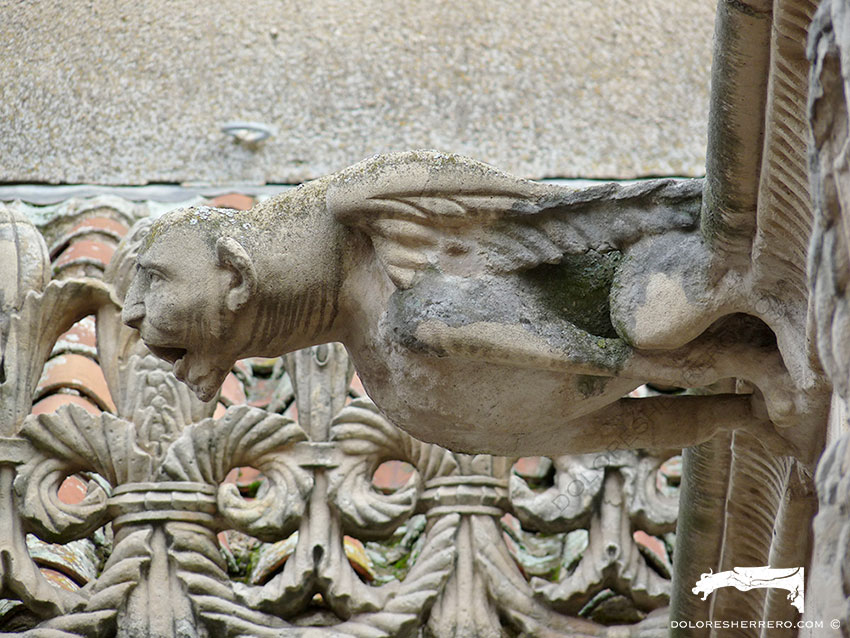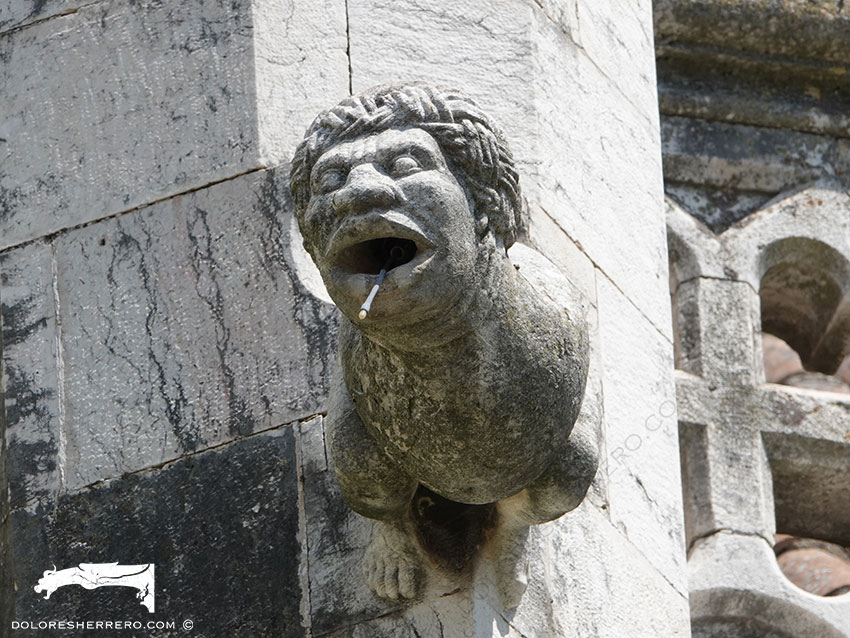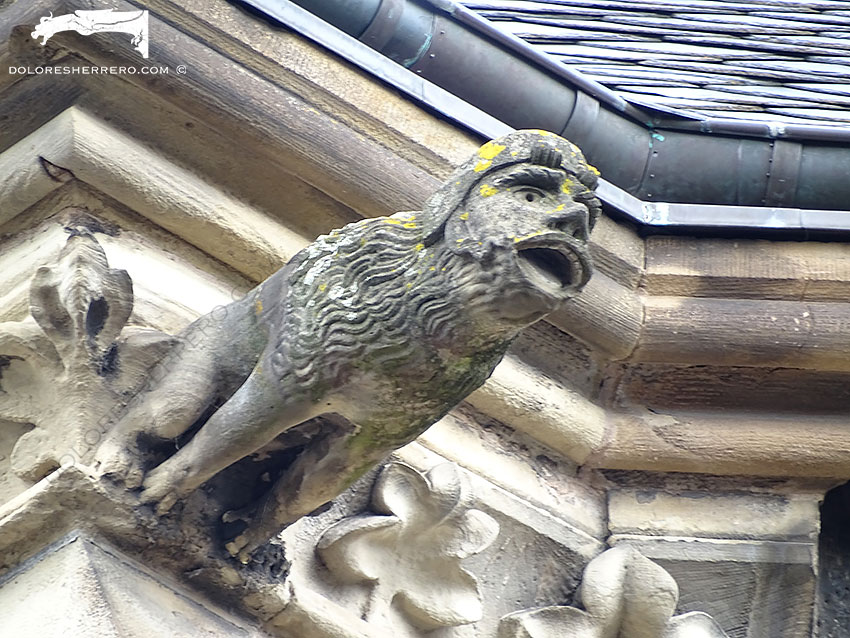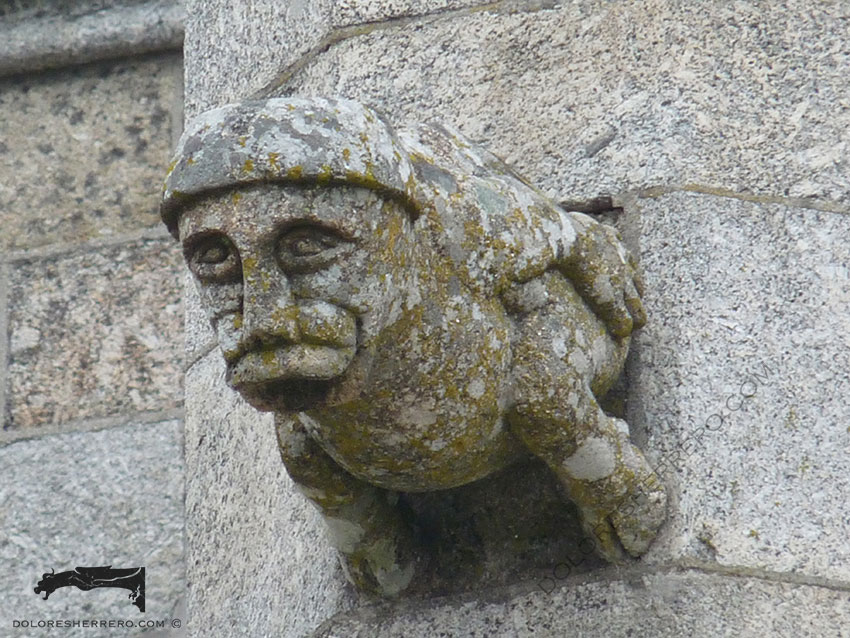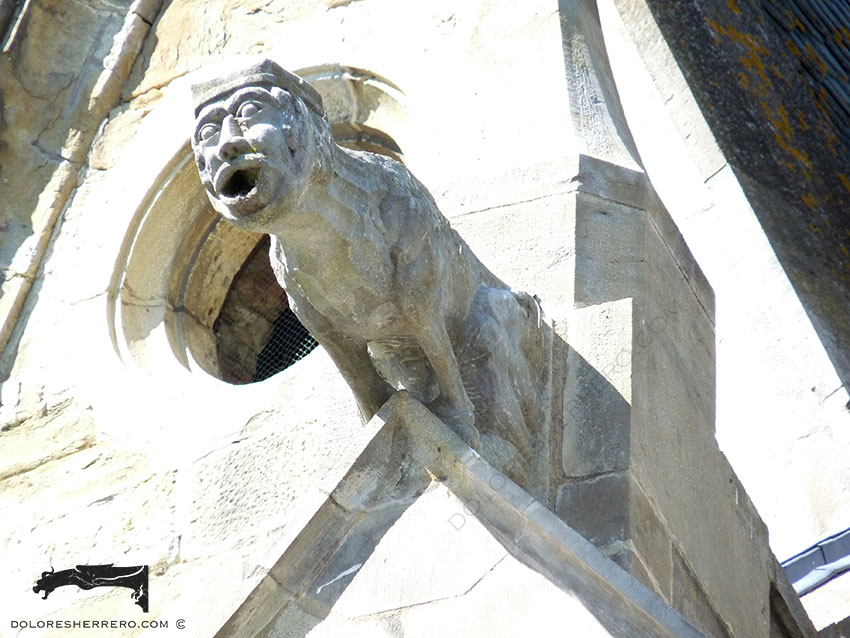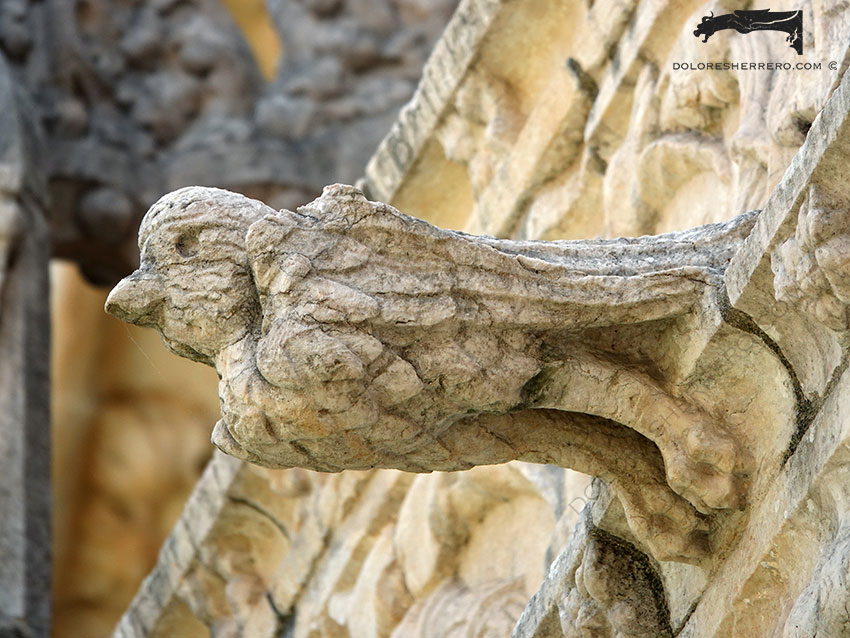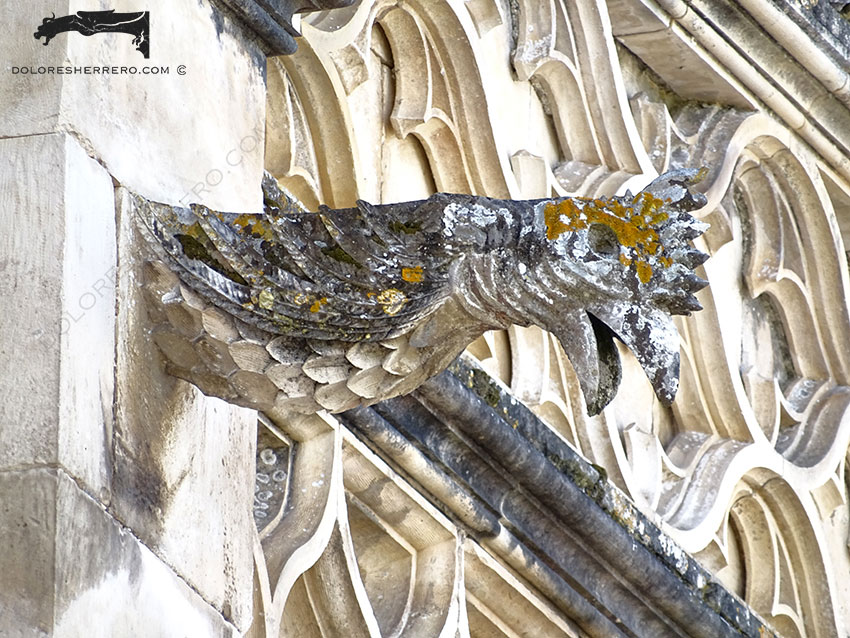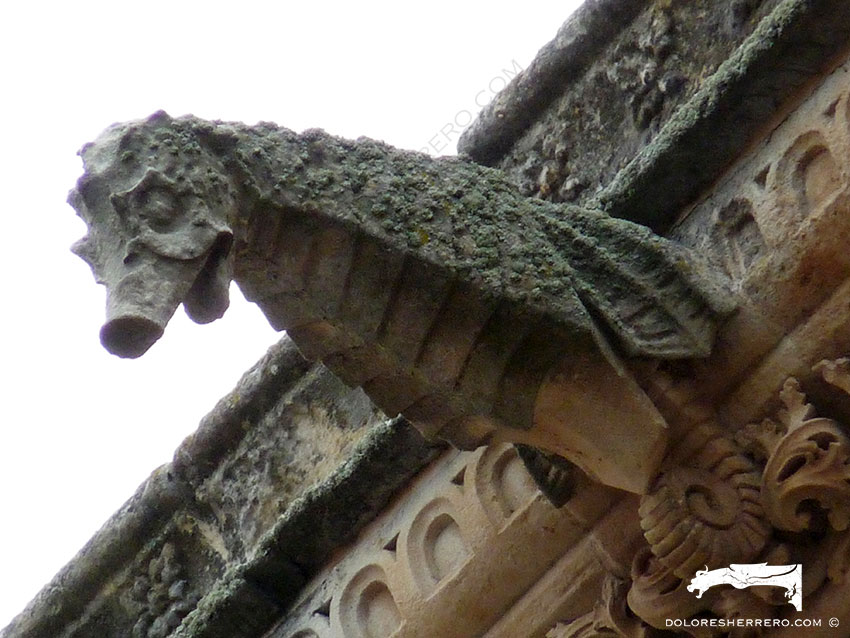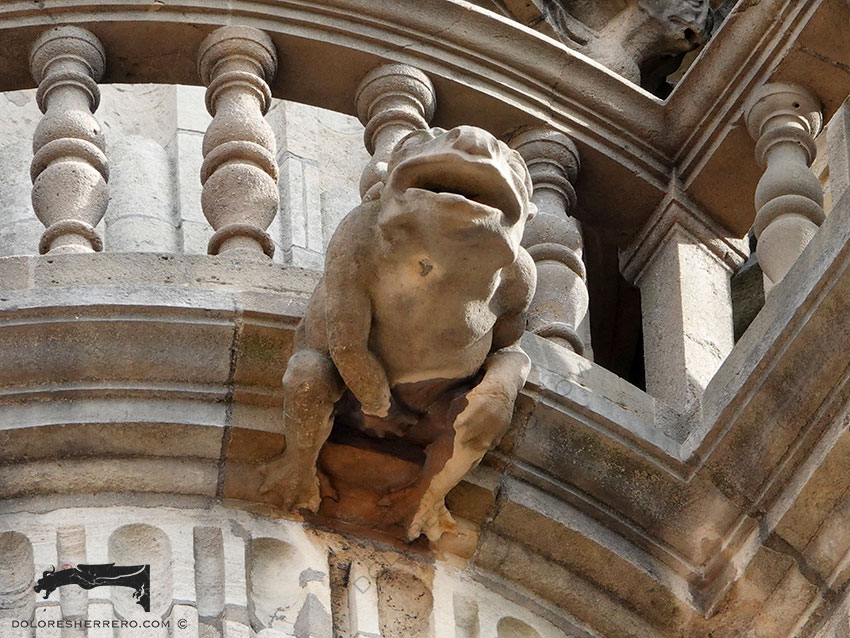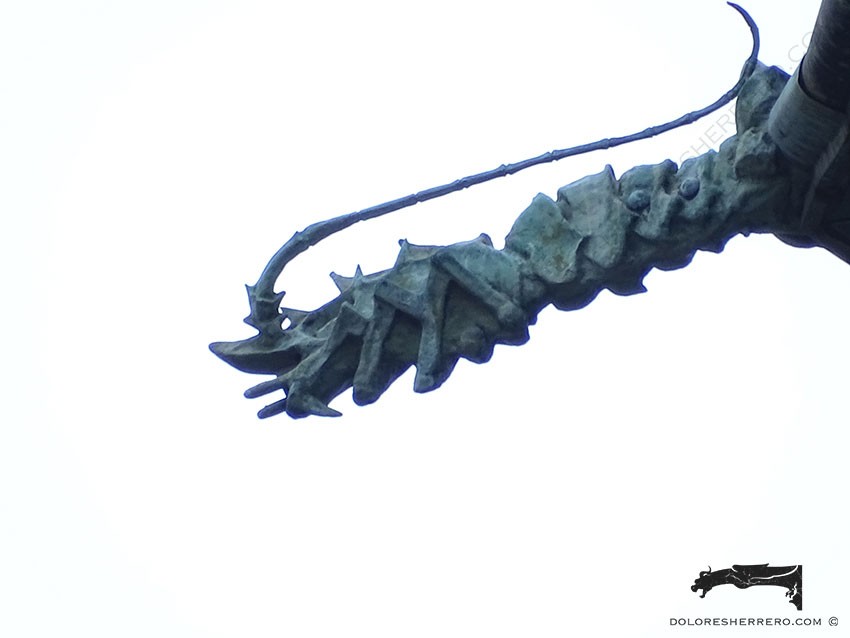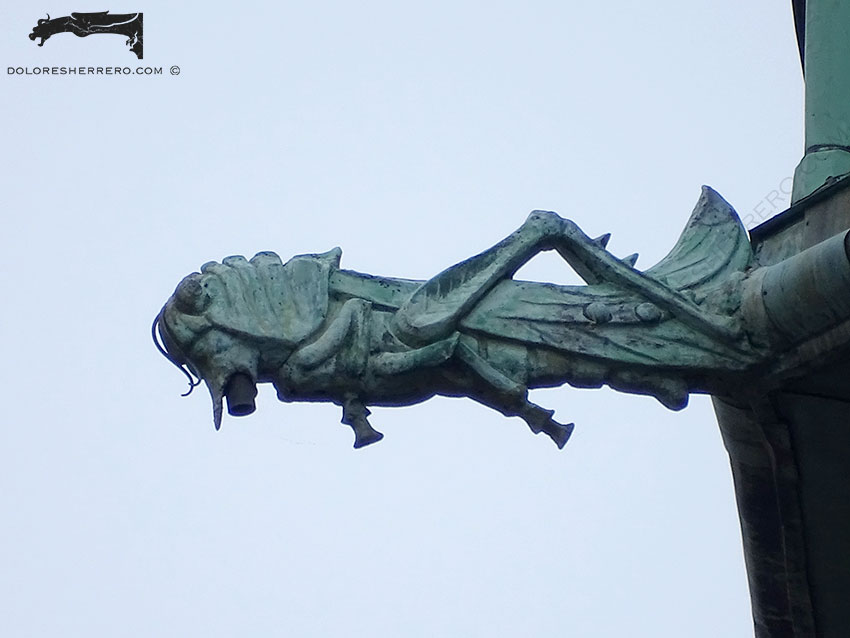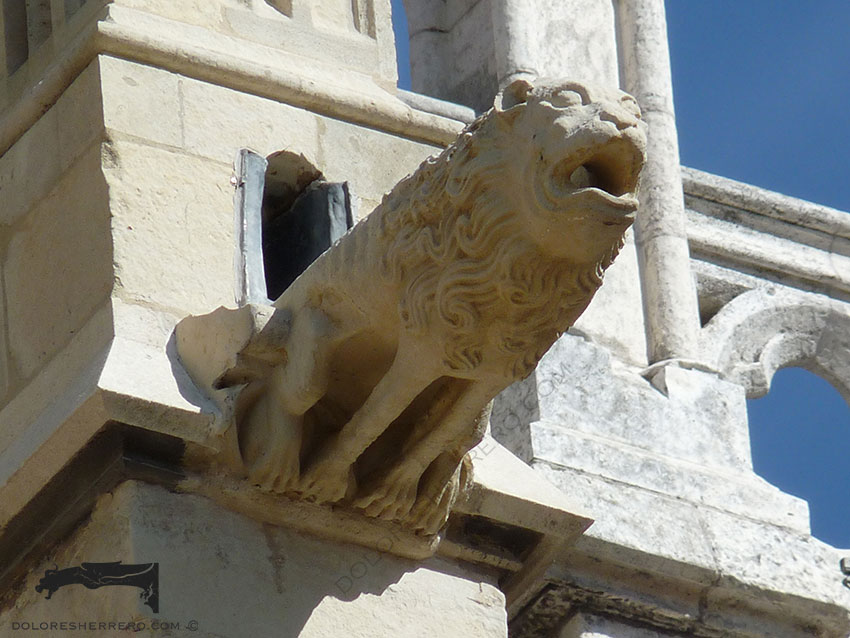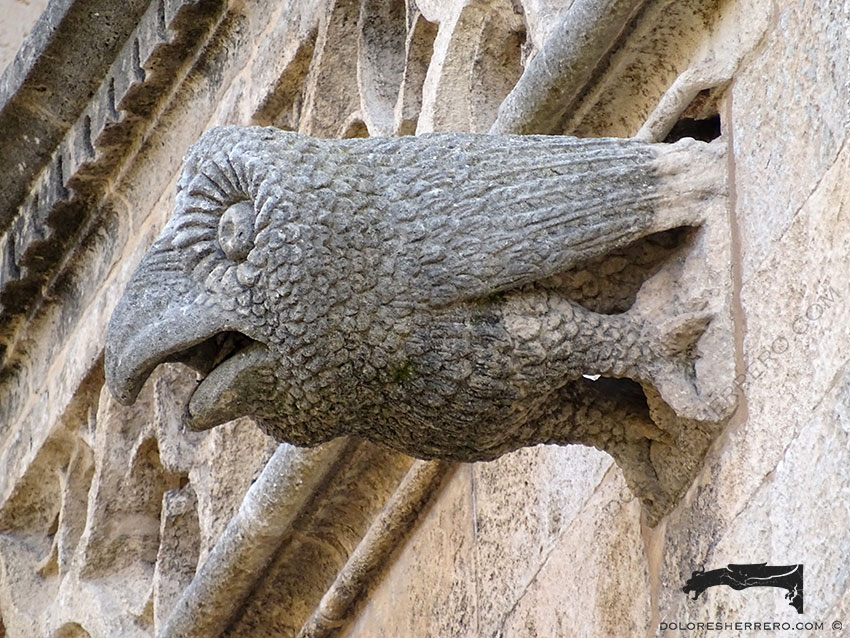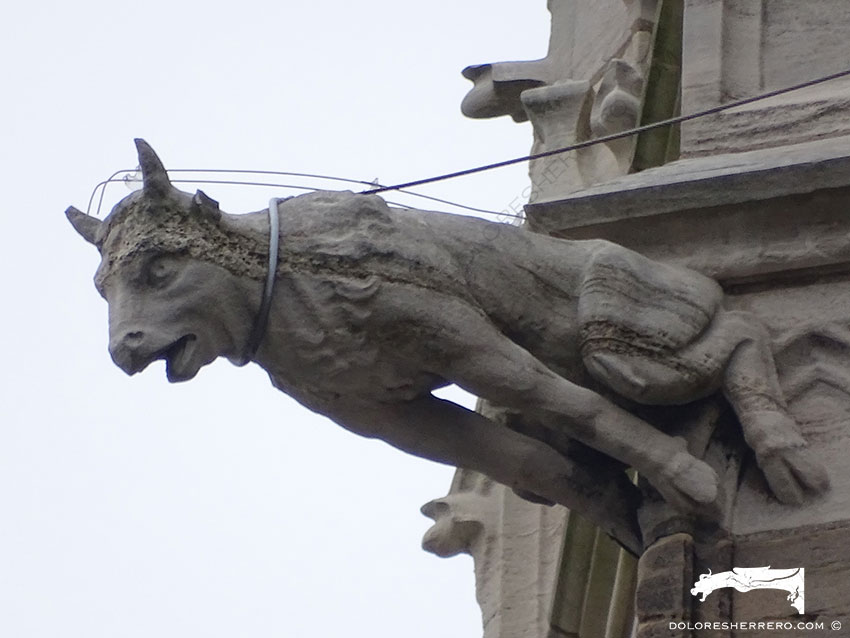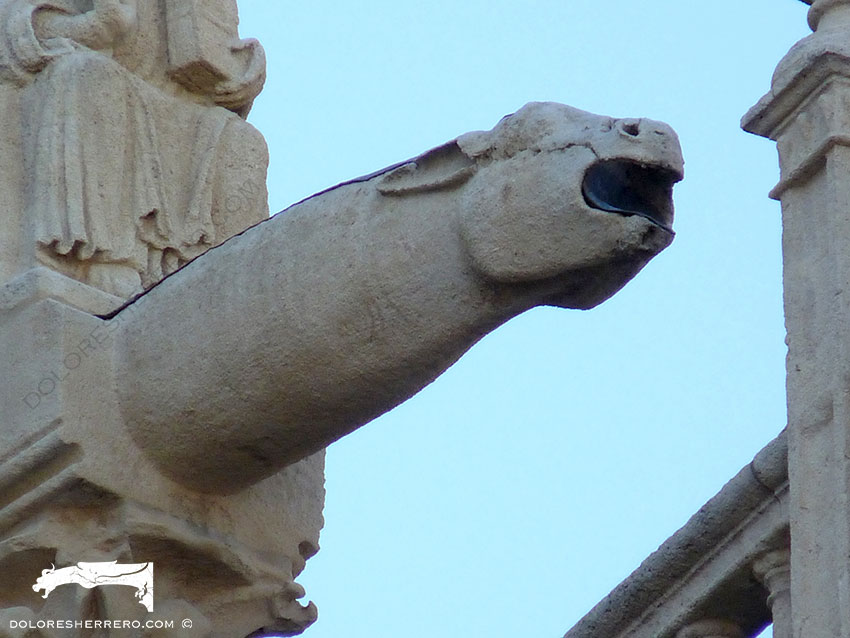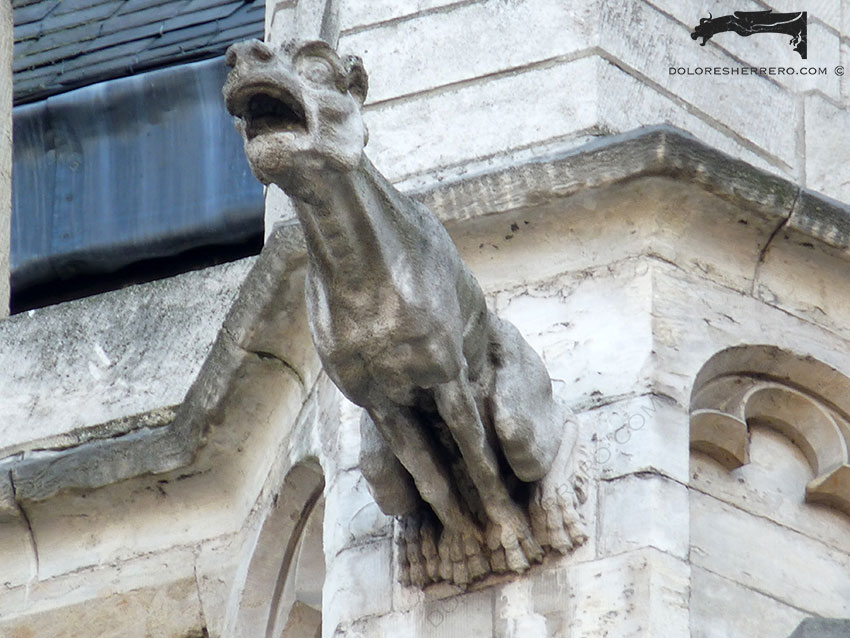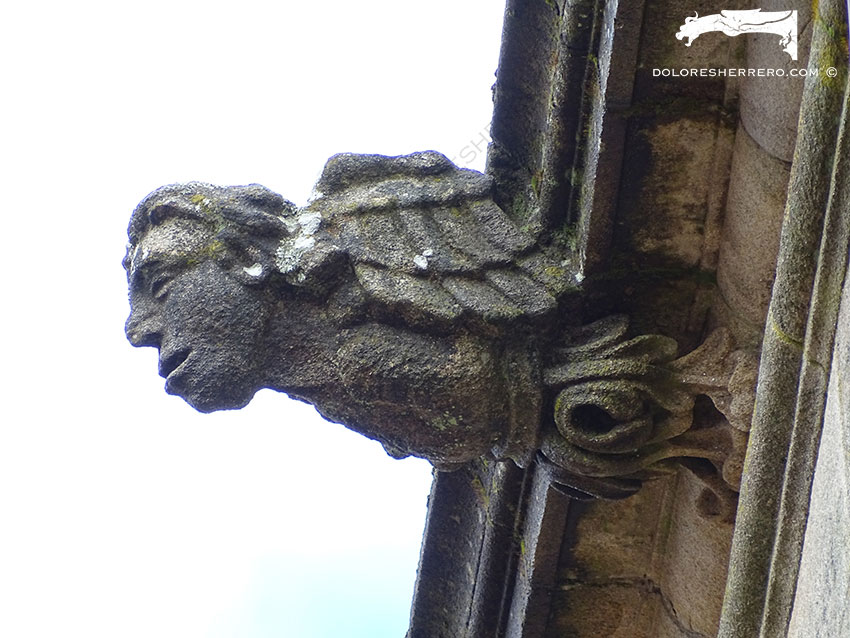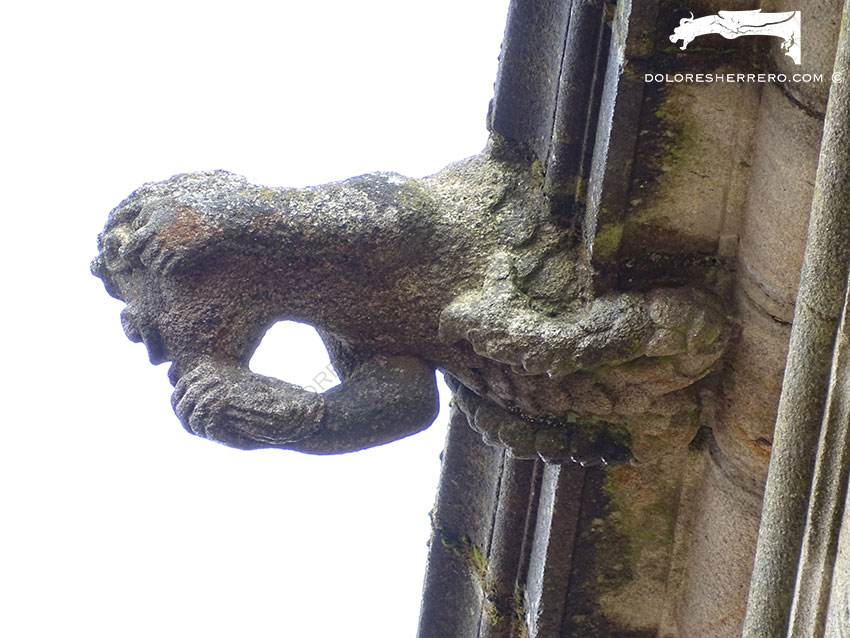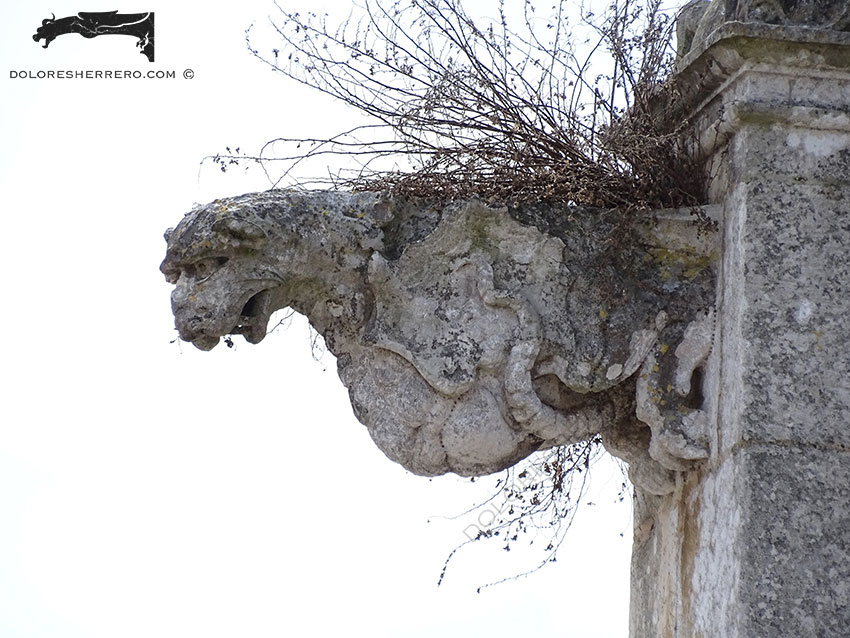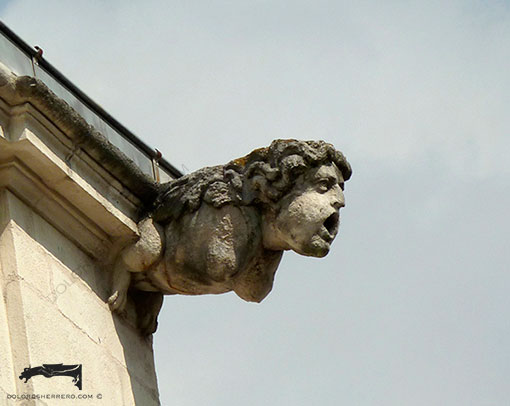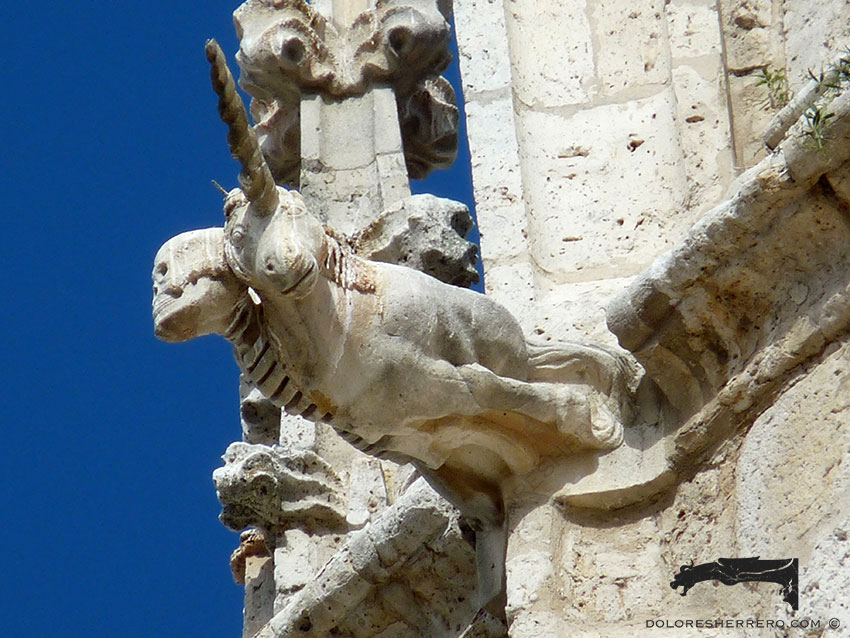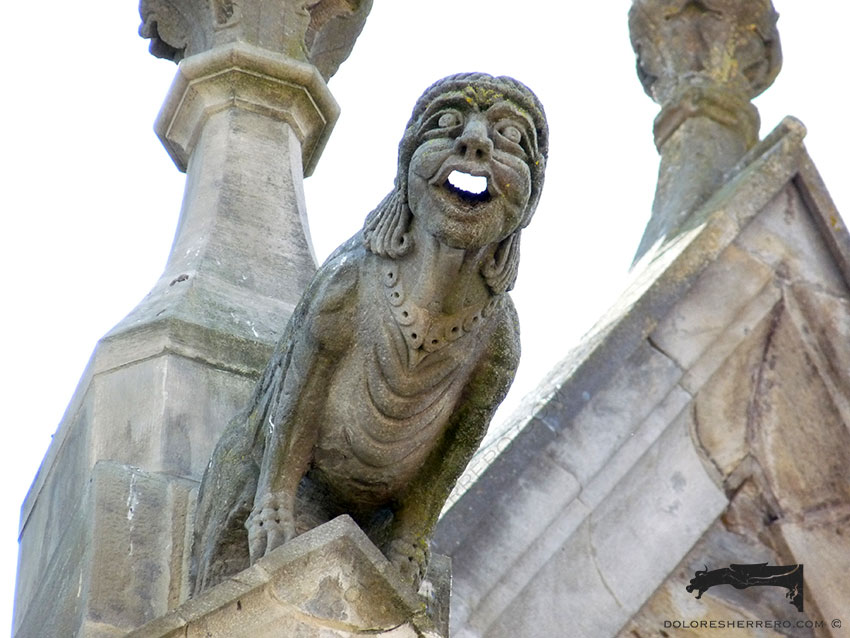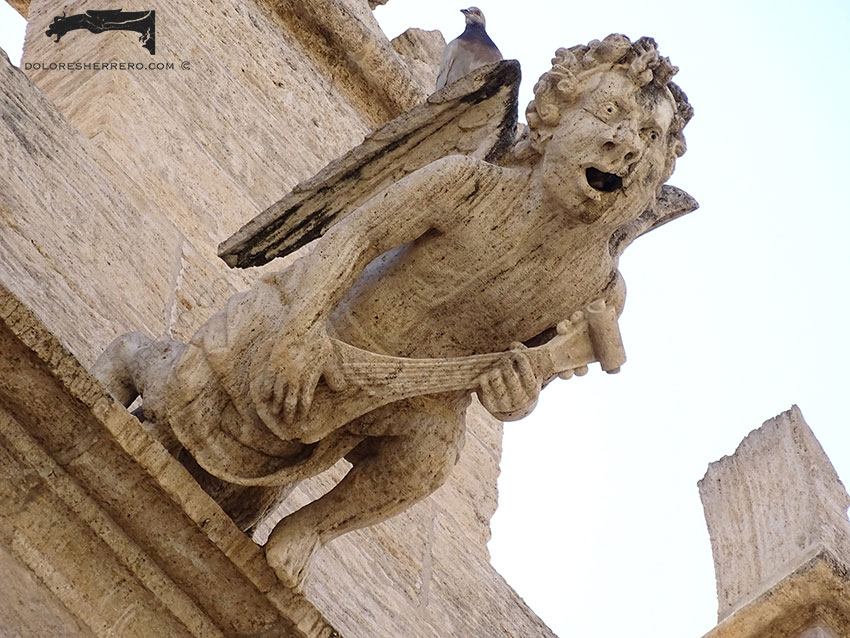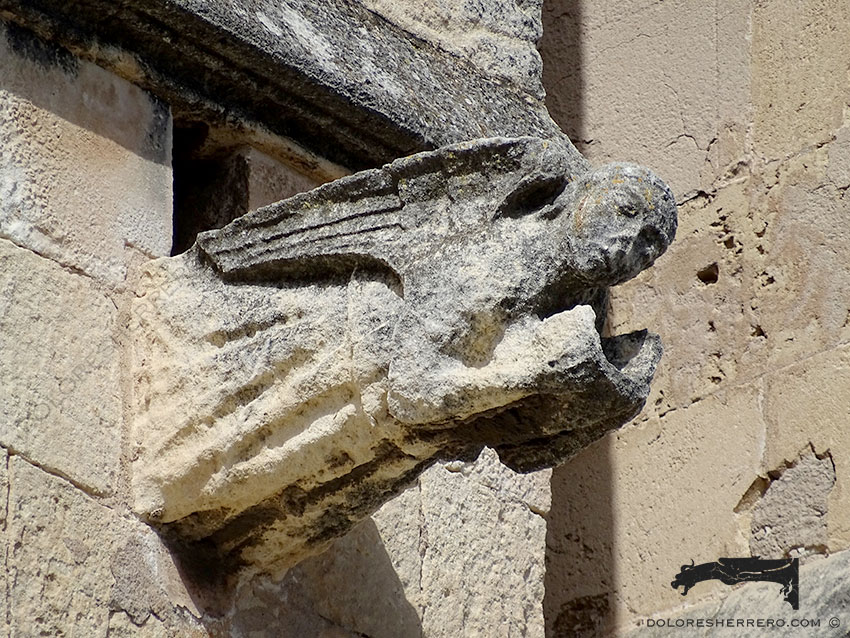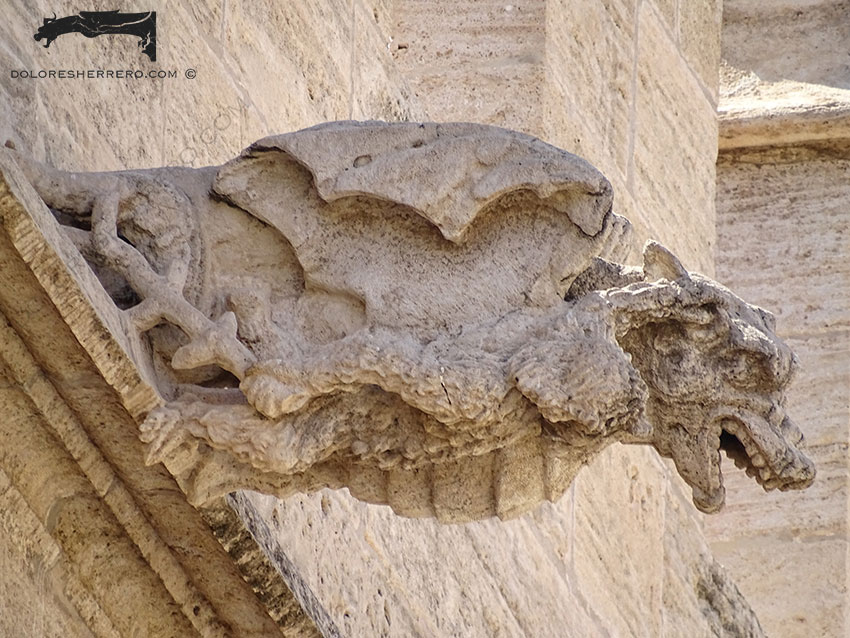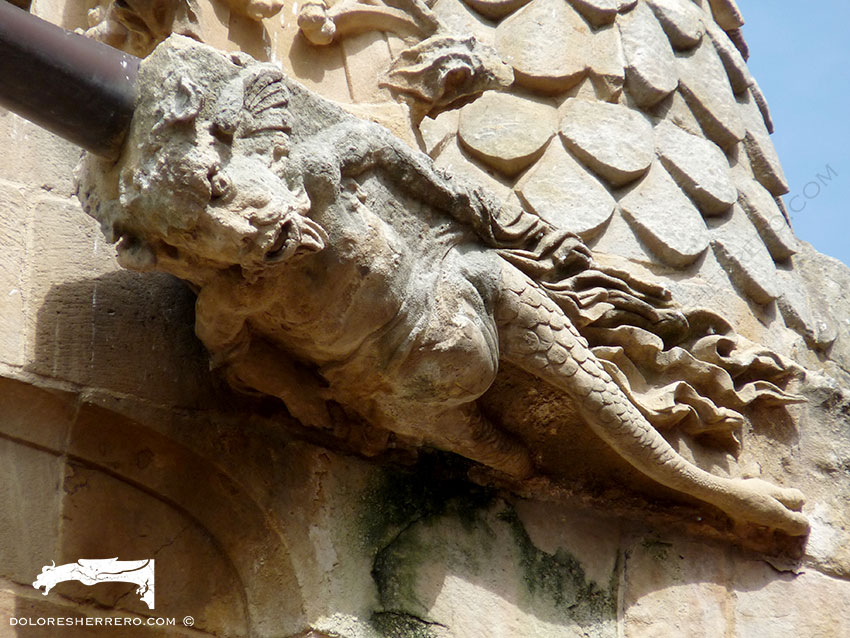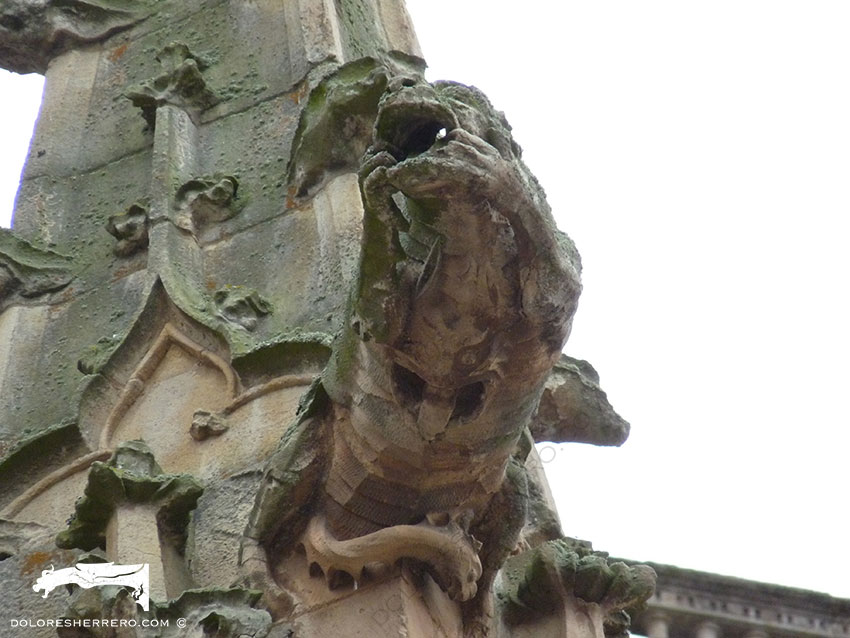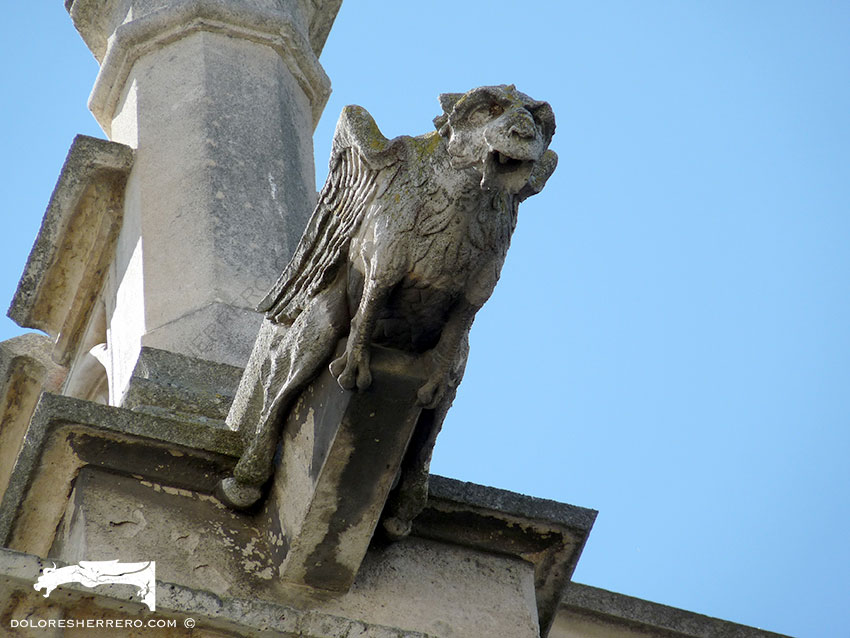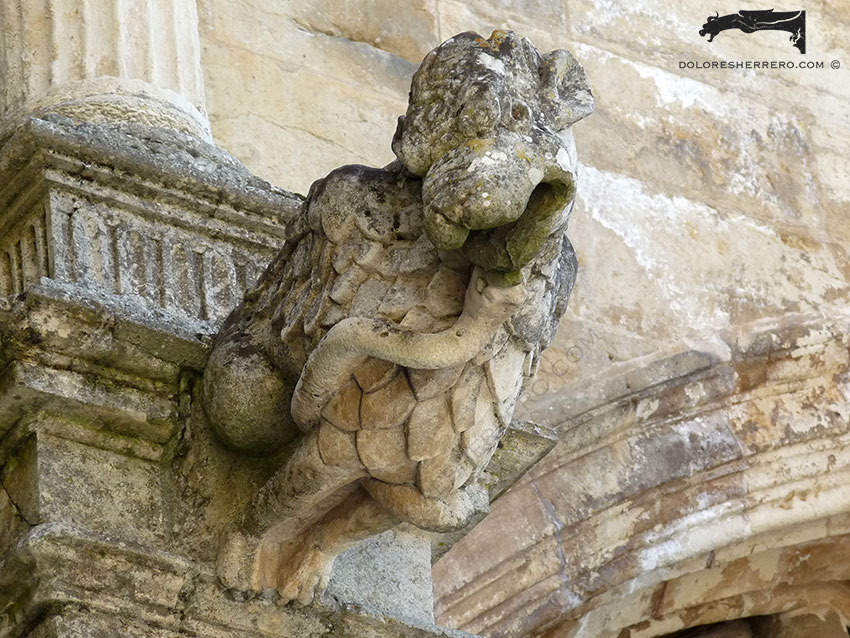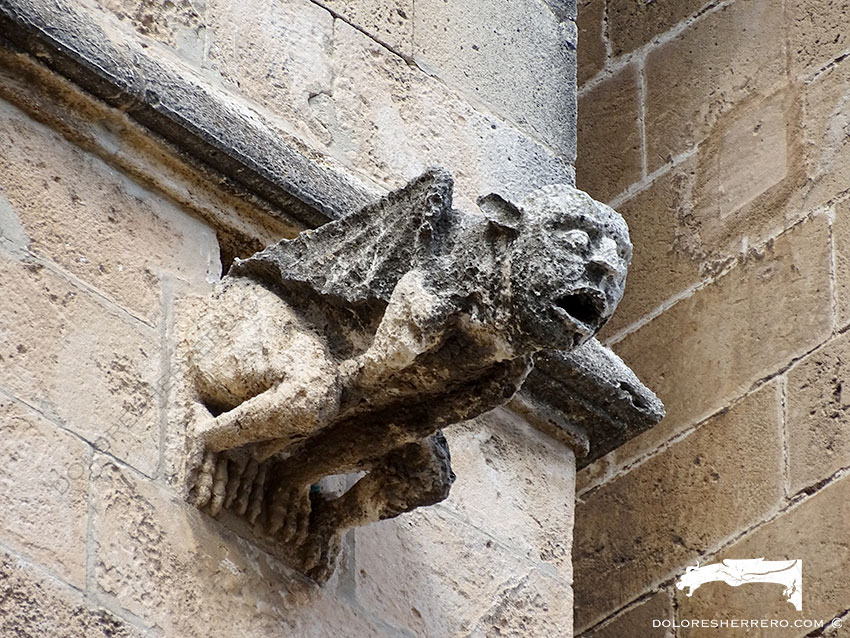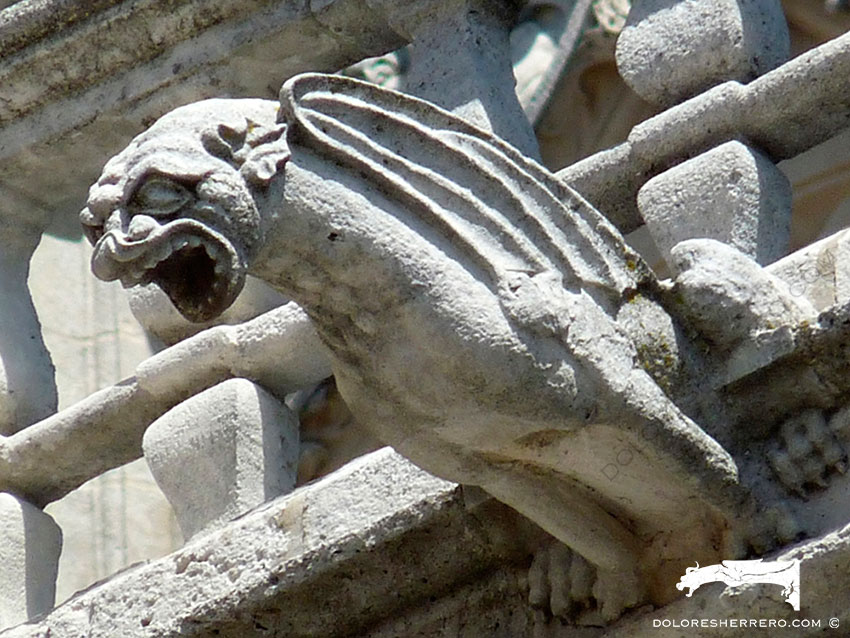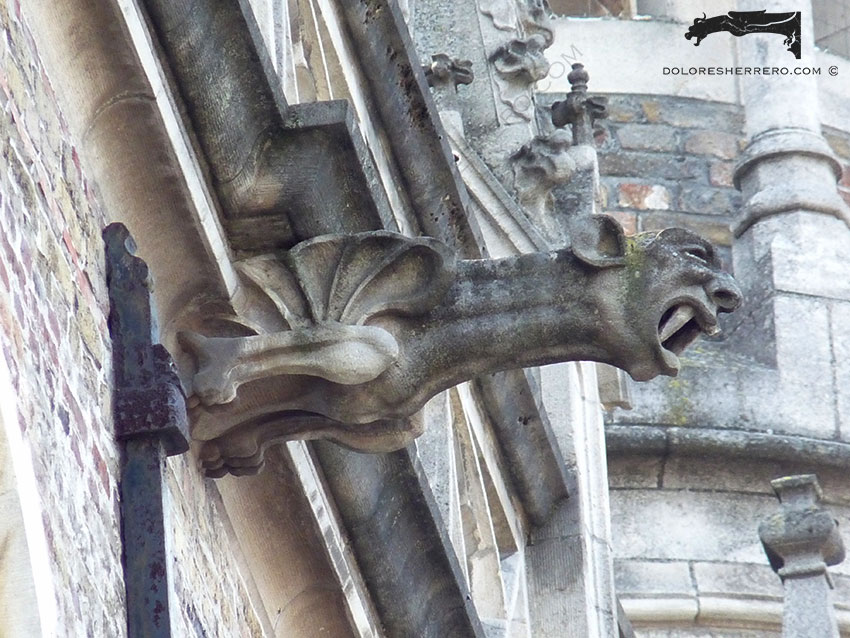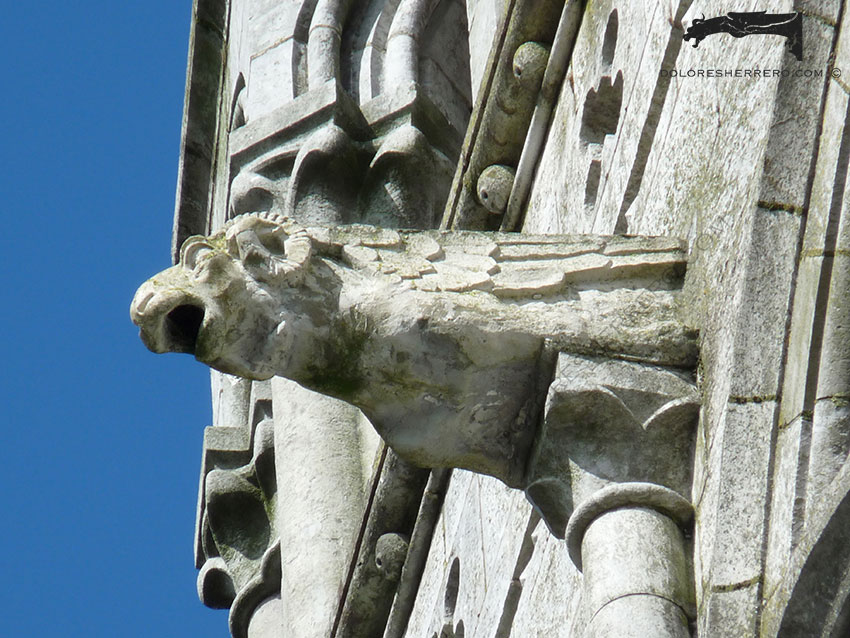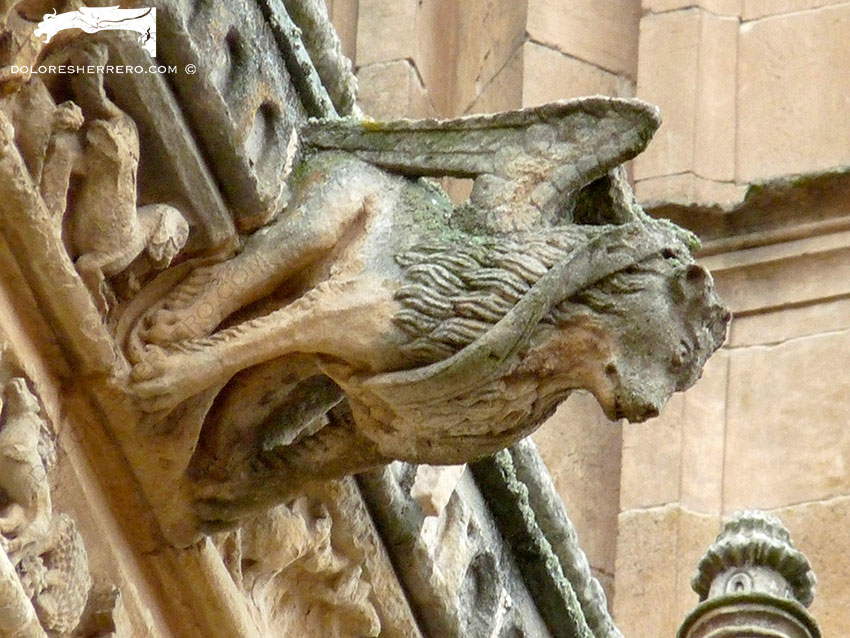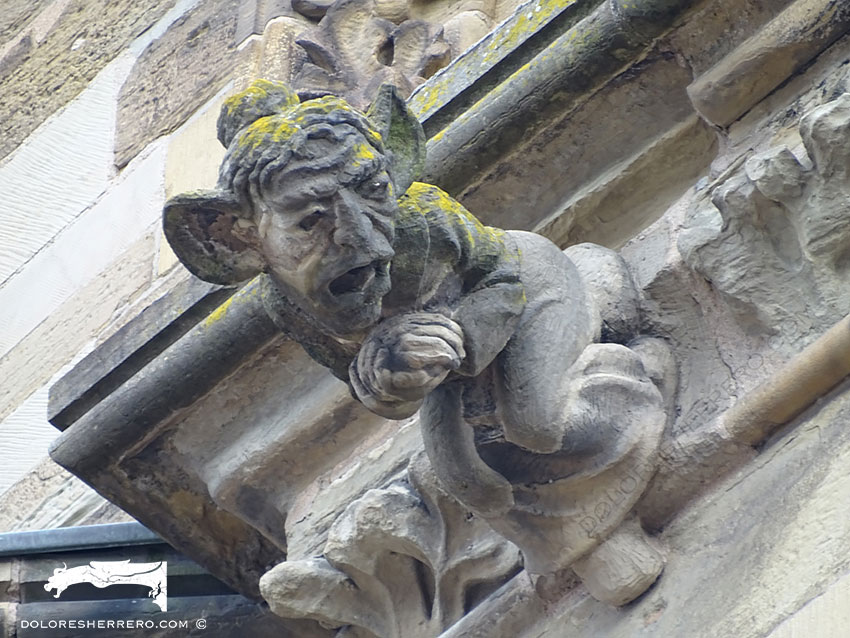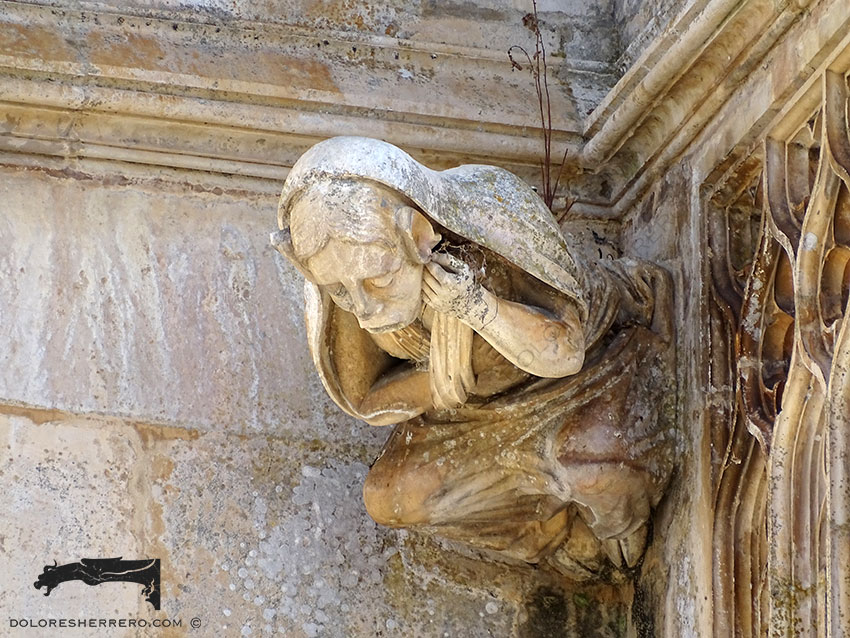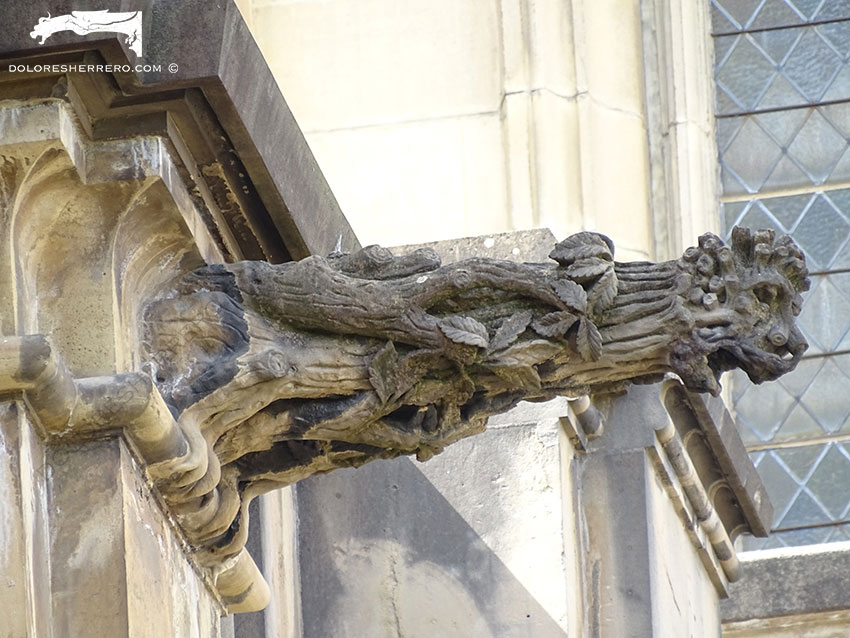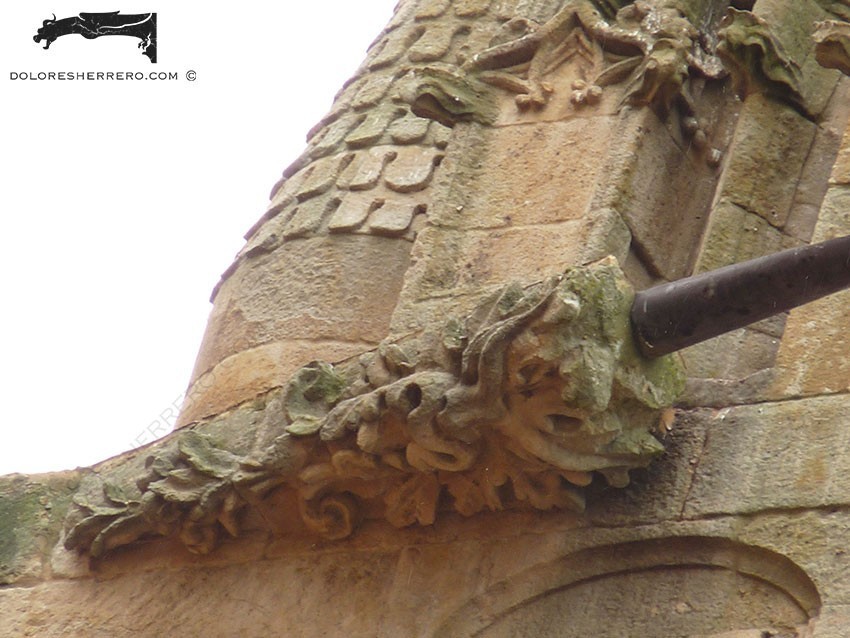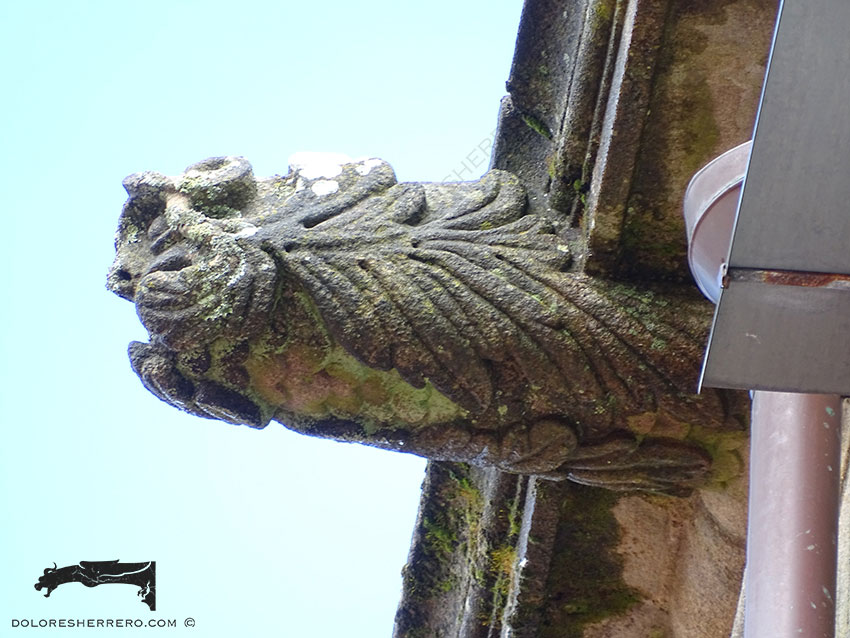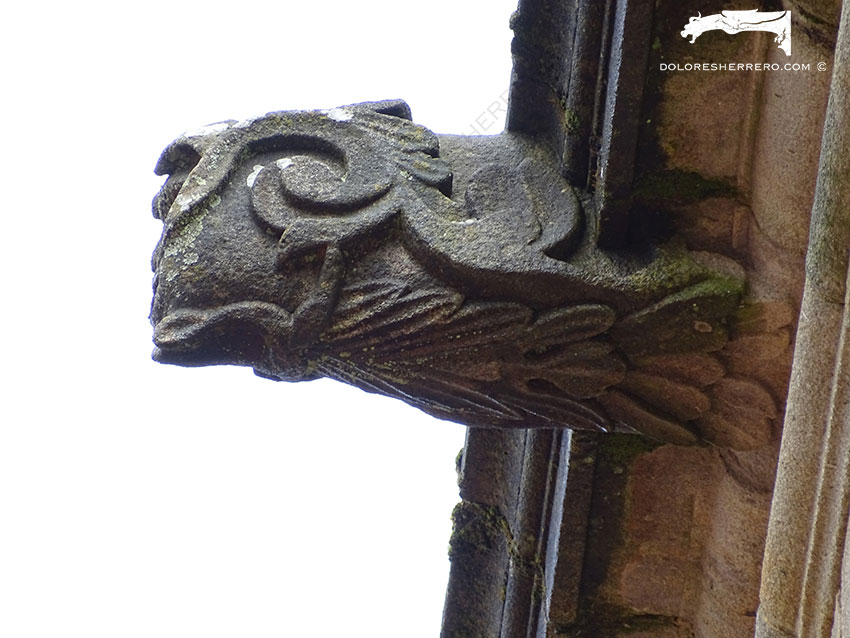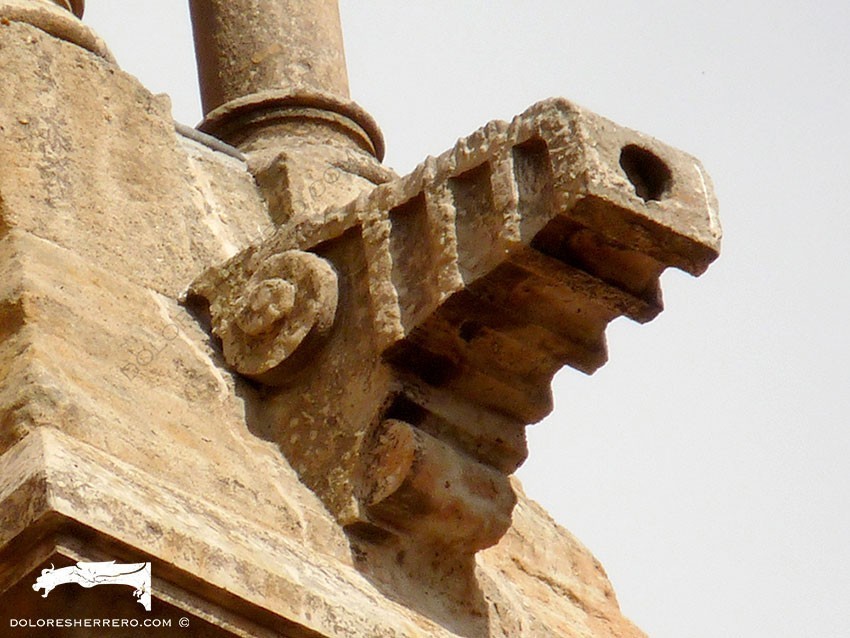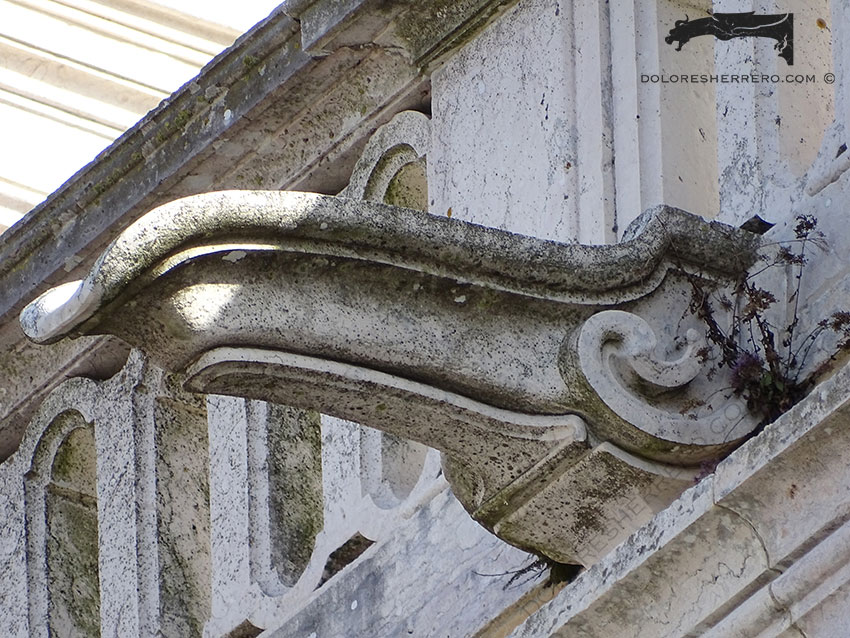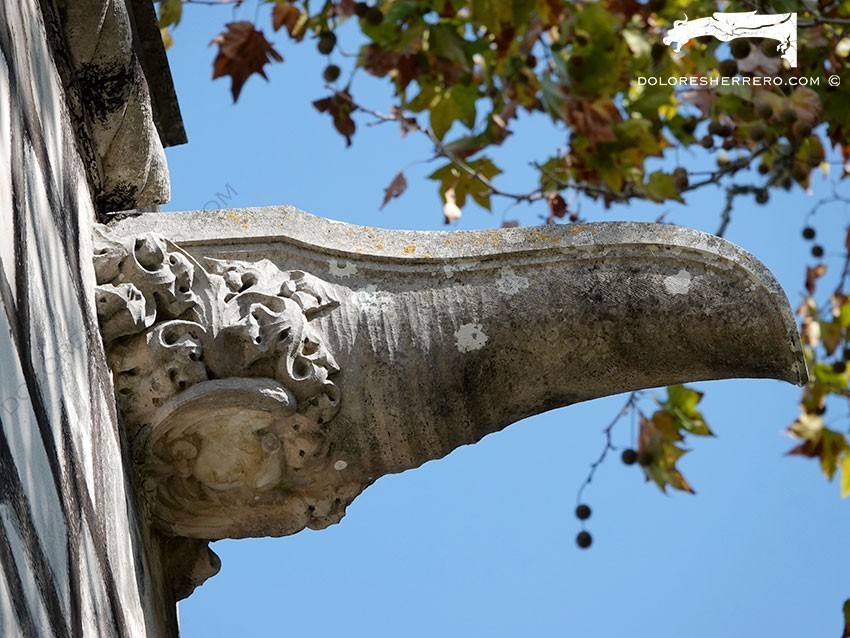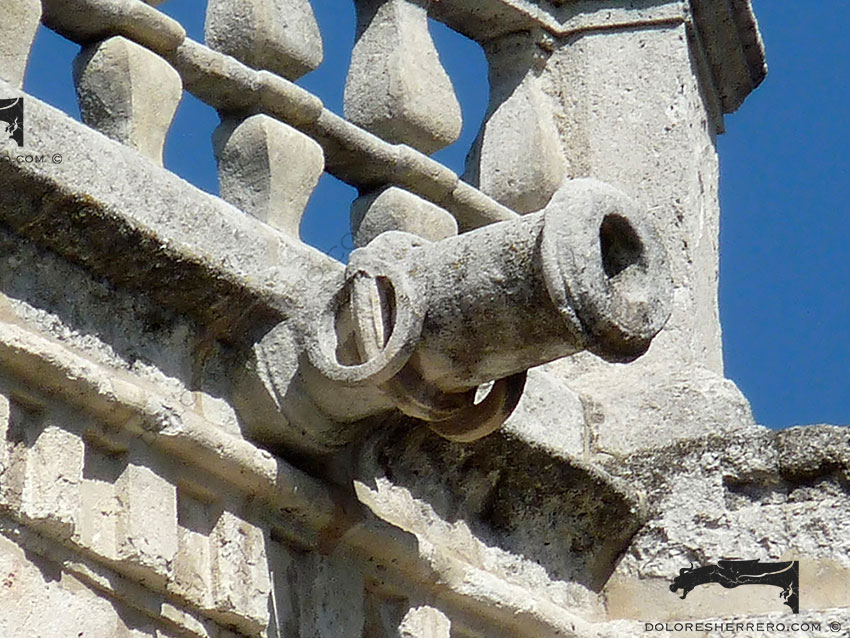How Many Types of Gargoyles Are There?
Generally speaking, gargoyles can be classified into three kinds of figures, humans, animals and monsters. It’s difficult to establish an exact classification of all kinds of gargoyles, as one figure may belong to one or more types. Fantastical or mythological gargoyle figures may be included in the monster category, sometimes they may even fall into the devil category, while some hybrids and real animals can also refer to the devil, and so on.
However, the classification I’ve drawn up below is as accurate and complete as possible and covers the various types of gargoyles.
Iconographic Classification of Gargoyles
We now present the main iconographic typologies of gargoyles:
Gargoyles Representing Human Figures
It’s very common to see gargoyles in human form. You can see depictions of men and women with period clothing, monks, witches, skeletons, musicians, etc. They’re normally figures that have some kind of meaning and are usually conveying some sort of lesson or warning.
- Cathedral of María Inmaculada in Vitoria (Spain)
- Palencia Cathedral (Spain)
- Cathedral of St. Michel in Carcassonne (France)
- Batalha Monastery (Portugal)
- Batalha Monastery (Portugal)
- Batalha Monastery (Portugal)
Gargoyles Representing Anthropomorphic Figures
These are animals with features similar to those of humans. They are half human and may have human physical features or have something that identifies them as men or women, such as clothing.
- Casa de las Conchas (House of Shells) in Salamanca (Spain)
- Jerónimos Monastery in Lisbon (Portugal)
- Cathedral of St. Michel in Carcassonne (France)
- Church of Our Lady in Trier (Germany)
- Guarda Cathedral (Portugal)
- Mirepoix Cathedral (France)
Gargoyles Representing Real Animals
Gargoyle figures with naturalist portrayals used symbolically, the origins of which date back to the works of Aristotle, Pliny, Saint Isidore and other authors, as well as to the Physiologus and other bestiaries.
- Jerónimos Monastery in Lisbon (Portugal)
- Alcobaça Monastery (Portugal)
- Batalha Monastery (Portugal)
- Salamanca Cathedral (Spain)
- Oviedo Cathedral (Spain)
- Luxembourg Cathedral
- Luxembourg Cathedral
- Limoges Cathedral (France)
- León Cathedral (Spain)
- Palma de Mallorca Cathedral (Spain)
- Astorga Cathedral (Spain)
- Aachen Cathedral (Germany)
- Burgos Cathedral (Spain)
- Brussels City Hall (Belgium)
Gargoyles Representing Fantastic or Mythological Animals
These depictions come both from the same sources as real animals and also from mythological works dating from Antiquity. These images are also used symbolically, with folklore, tradition and superstition playing a large part in figures like the dragon, the basilisk, the gryphon, the harpy, the mermaid, etc.
- San Martín Pinario Monastery in Santiago de Compostela (Spain)
- San Martín Pinario Monastery in Santiago de Compostela (Spain)
- Batalha Monastery (Portugal)
- La Rochelle (France)
- Palencia Cathedral (Spain)
- Mirepoix Cathedral (France)
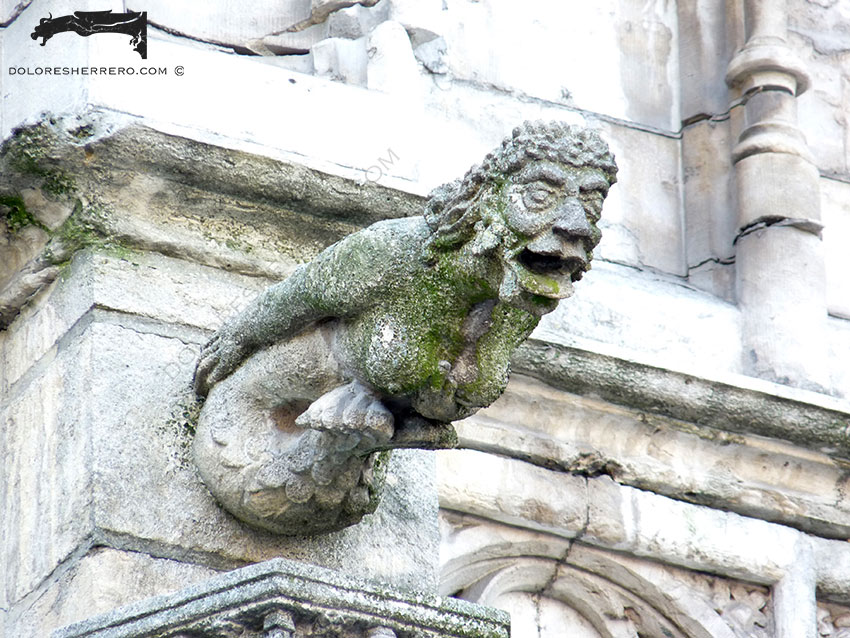
Brussels City Hall (Belgium)
Gargoyles Representing Angels and Demons
It’s quite unusual to see angels decorating gargoyles, but there are a few wonderful examples. In contrast, the figure of the devil is much more common and takes on a variety of forms.
Gargoyles Representing Angels
- Valencia Lonja (Spain)
- Palma de Mallorca Cathedral (Spain)
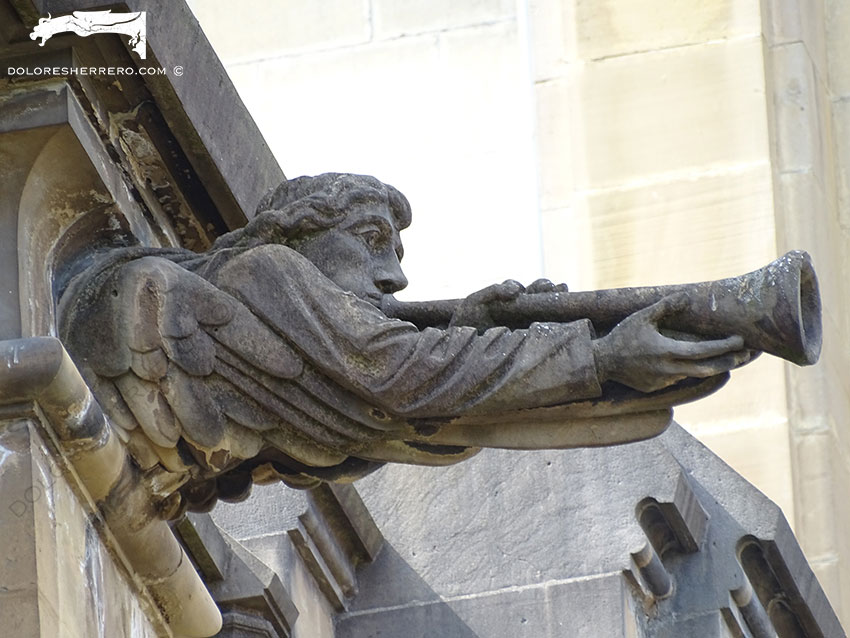
Cathedral of María Inmaculada in Vitoria (Spain)
Gargoyles Representing Demons
- Valencia Lonja (Spain)
- Salamanca Cathedral (Spain)
- Salamanca Cathedral (Spain)
- Palencia Cathedral (Spain)
- León Cathedral (Spain)
- Palma de Mallorca Cathedral (Spain)
- Burgos Cathedral (Spain)
- Bruges City Hall (Belgium)
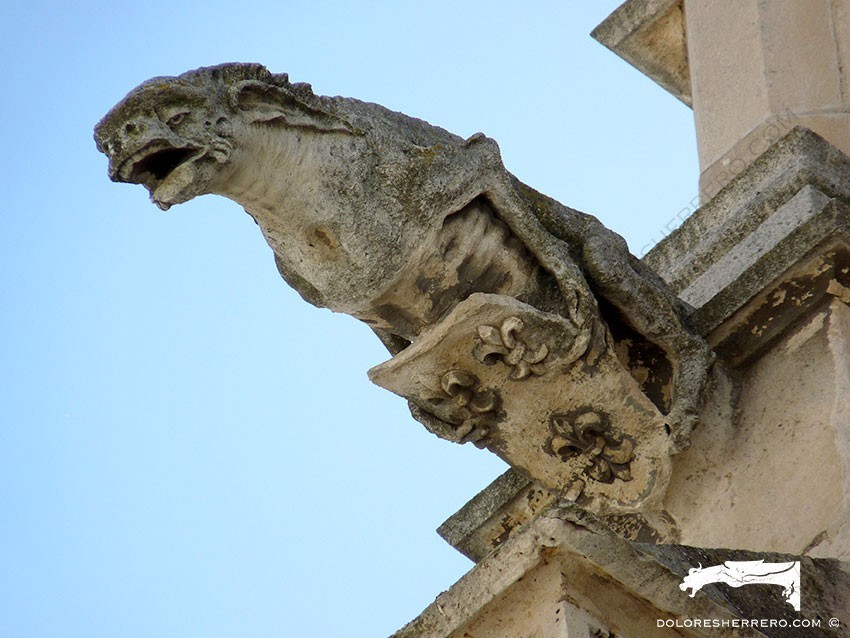
Gargoyles Representing Monstrous Creatures
These can be split into three groups: animal monsters, human monsters and plant monsters. Animal monsters are hybrid creatures that come from the combination of various animal body parts and they tend to be far-fetched and unconfined creations. The most common depiction is the winged quadruped. Human monsters are figures of men and women from races of monstrous human creatures (paniotos, sciapods – also known as monopods – and blemmyes), but they are rarely seen in gargoyles. Plant monster is a term used to describe a type of gargoyle consisting of a mix of dead leaves with faces or with various monstrous elements.
Gargoyles Representing Animal Monsters
- Cork Cathedral (Ireland)
- Salamanca Cathedral (Spain)

Gargoyles Representing Human Monsters
- Church of Our Lady in Trier (Germany)
- Church of Our Lady in Trier (Germany)
- Batalha Monastery (Portugal)
Gargoyles Representing Plant Monsters
- Cathedral of María Inmaculada in Vitoria (Spain)
- Salamanca Cathedral (Spain)
- San Martín Pinario Monastery in Santiago de Compostela (Spain)
- San Martín Pinario Monastery in Santiago de Compostela (Spain)
Gargoyles Representing Geometric Forms and Objects
This section includes gargoyles that depict objects (vessel, cannon, column) as well as those that are simple geometric shapes. This design became more common in post-Gothic periods.
- Church of San Juan de Sahagún in Salamanca (Spain)
- National Palace of Mafra (Portugal)
- Regaleira Palace in Sintra (Portugal)
- Burgos Cathedral (Spain)
From real animals carved as gargoyles to fantastic and monstrous beings, human and anthropomorphic figures, demonic and grotesque sculptures, and geometric forms—this is an essentially medieval iconography, rich in symbolism and layered with meaning.

Doctor of Art History and researcher specializing in the study of gargoyles.
I am Dolores Herrero Ferrio, and my thesis, “An Approach to the Study of Gargoyles of Gothic Cathedrals in Castilla and León”, is dedicated to the study of these fascinating figures.
If you like gargoyles and art history, you will also enjoy my book, “The Gargoyle and Its Iconography,” a book I have written with great care for those interested in the world of gargoyles.
I have created my own Encyclopedia of Gargoyles, a Gargopedia to share with you, where you will discover all the secrets and wonders of these enigmatic sculptures.
I hope you enjoy this Gargopedia as much as I have enjoyed creating it, and remember that each gargoyle has a story to tell, and here you will discover them all.
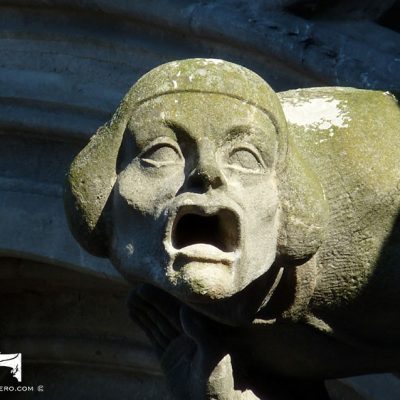 Gargoyles and Their Fascination in the History of Art: Essential Quotes from Distinguished Authors
Gargoyles and Their Fascination in the History of Art: Essential Quotes from Distinguished Authors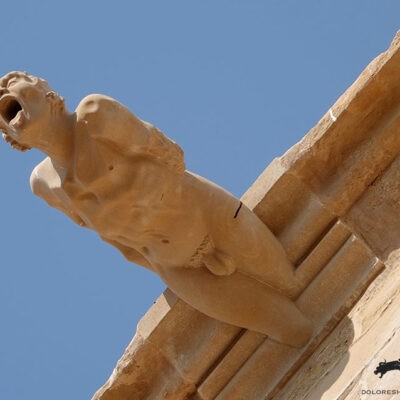 Nudity in Gargoyles
Nudity in Gargoyles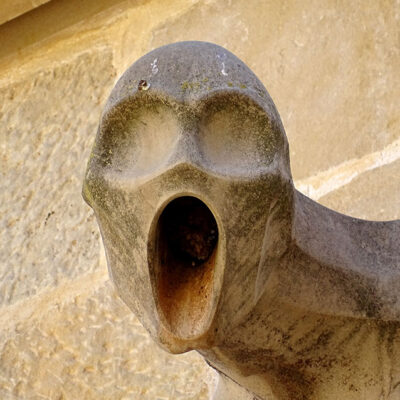 The Scream in Gargoyles
The Scream in Gargoyles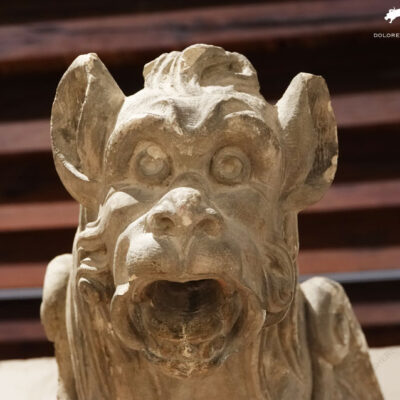 Monsters in Art: Gargoyles and the Vision of the Terrifying
Monsters in Art: Gargoyles and the Vision of the Terrifying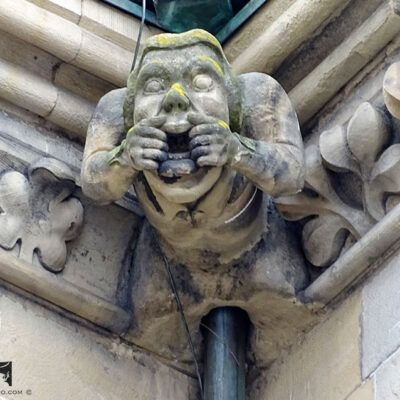 Gesturality in Gargoyles: Part One
Gesturality in Gargoyles: Part One Gargoyles of Quito (Ecuador): Animal Sculptures in Andean Architecture
Gargoyles of Quito (Ecuador): Animal Sculptures in Andean Architecture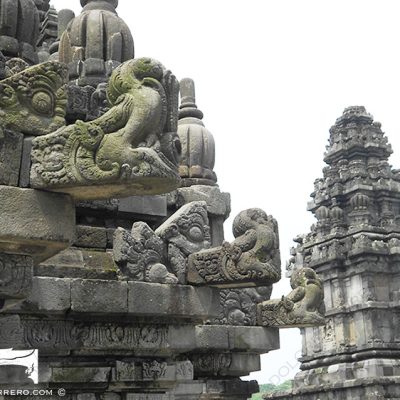 Gargoyles of Indonesia: Mythical Faces in Traditional Asian Architecture
Gargoyles of Indonesia: Mythical Faces in Traditional Asian Architecture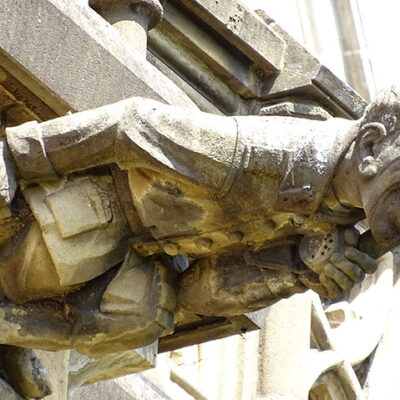 The Gargoyles on the Cathedral of María Inmaculada in Vitoria: Part Two
The Gargoyles on the Cathedral of María Inmaculada in Vitoria: Part Two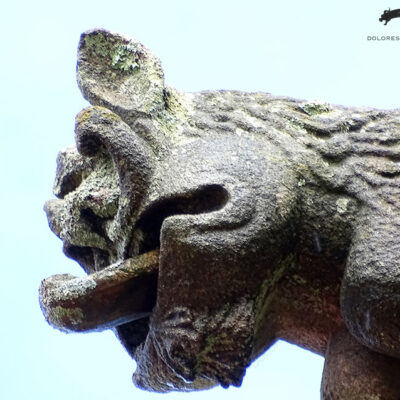 The Gargoyles of Santiago de Compostela and their Fantastic Iconography: Part One
The Gargoyles of Santiago de Compostela and their Fantastic Iconography: Part One